… the Science of the Possible
Below is a sampling of typical projects by the Aircraft Design Research LLC predecessor company, CRC. All were conducted or headed by Dr. Raymer, President of the new company, who employs the same expertise and methods for new projects. It is hoped to replace this listing of older samples with new projects from current operations, but most new projects today have strict non-disclosure agreements that preclude such bragging.
- L-1011 Carrier Aircraft Capability Study
- BQM-167 “Skeeter” Design Support
- USAF Reusable Rocket Studies (“FAST”)
- Ohio Airship “Dynalifter”
- Navy/USMC Multirole Strike Fighter
- Pioneer Rocketplane Concept Design
- Fuel Cell Electric Aircraft Design Study
L-1011 Carrier Aircraft Capability Study
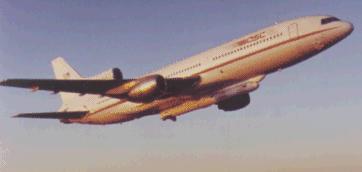
An L-1011 Carrier Aircraft Capability Study was done for Orbital Sciences Corporation in the early 1990’s. Orbital Sciences was using a USAF B-52 bomber to launch its Pegasus small satellite booster, and needed their own aircraft for regular commercial usage. CRC was funded to study the suitability of the Lockheed L-1011 for this purpose, and brought together a diverse team of experienced designers and L-1011 experts.
The study included aircraft structural redesign and analysis, launch mechanism, potential landing gear redesign, and systems revisions. Calculation of aerodynamics, weights, propulsion, range, and performance was done using CRC’s RDS-Professional software. Based on CRC results, Orbital Sciences bought and modified an L-1011 and now uses it for Pegasus launch and other research projects. According to the contract manager, it “worked just like you said it would!”
BQM-167 “Skeeter” Design Support

Dr. Raymer assisted Composite Engineering Inc in the design of the BQM-167 “Skeeter”, the USAF transonic jet-powered target drone UAV. He helped with the conceptual design, participated in wind tunnel and water tunnel testing, and performed an on-site design review. Raymer also supported a review of launch procedures aimed at maximizing launch reliability and safety. The BQM-167 is now in high-rate production and operating at Eglin AFB. .
USAF Reusable Rocket Studies (“FAST”)
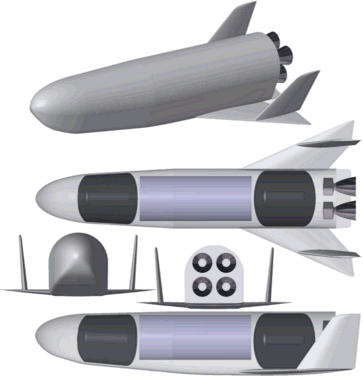
Dr. Raymer and his CRC team were heavily involved in the USAF reusable launch vehicle project at AFRL-VA (WPAFB). Variously called Micro-X, Hot Eagle, and finally FAST (Future Responsive Access to Space Technology), this project sought to develop and mature technologies that would allow development of future reusable military launch vehicles.
Dr. Raymer had the lead designer role in the project, developing the government baseline design and numerous trade study configurations (the design to the left is an early version). He also led a broad subcontract team to address relevant issues, including Universal Space Lines, Analytic Methods Inc., Composite Engineering Inc, and Andrews Space Inc.
Raymer also did the preliminary performance analysis using his own “ROAST” trajectory code, which is a 3-DOF simulation based upon and using the RDS-Professional data structure. This allows rapid simulation of boost, coast, reentry, and landing. ROAST results were compared to the industry-standard POST code and found to be in good agreement.
Base upon Dr. Raymer’s design concept baseline, the USAF awarded major technology hardware demonstration contracts to Northrop-Grumman, Lockheed Martin, and Honeywell. Results provided a significant expansion in the reusable launch vehicle technology base, but the planned flight test program was not funded.
An overview paper about this project can be found here.
Ohio Airship “Dynalifter”
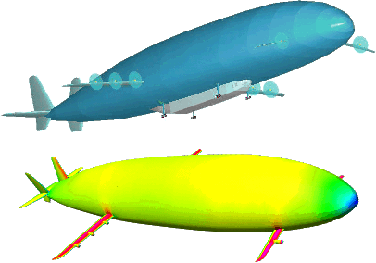
For Ohio Airship Inc., Dr. Raymer performed the initial design and analysis of the “Dynalifter”, a hybrid flight vehicle combining hydrostatic lift from helium with aerodynamic lift from wings and a shaped hull. This concept avoids many of the problems of traditional airships since a large fraction of its weight is carried by aerodynamic lift. It lands like a normal aircraft, decelerating on a runway as its weight is transferred from the wings to the tires. It has substantial weight on its tires when sitting on the ground allowing it to withstand a gusty side wind. Compared to a normal aircraft, the dynamic lift airship has reduced drag when flown at low speeds and flies on much less power than a conventional aircraft carrying a similar payload.
Tourism and long-endurance surveillance would be ideal applications for such a design due to the ability to fly slowly and safely using little power compared to an airplane, but at high speed compared to a traditional airship. A Dynalifter should also offer tremendous cargo-carrying ability especially for low-density payloads.

For initial sizing Dr. Raymer developed a hybrid airship parametric computer analysis model and used it to perform numerous trade studies to determine the ideal ratio of gas to aerodynamic lift. Then, he prepared and analyzed a number of configurations, ranging from a million-pound cargo lifter with a payload of 350,000 lbs to a single-seat “baby” – it is only 120 feet long! CRC’s Dynalifter design was described in the cover article of the October 2006 issue of Popular Mechanics.
Navy/USMC Multirole Strike Fighter
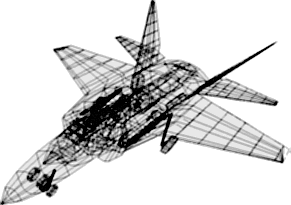
Another interesting project was during the early days of the JSF (F-35) program. Dr. Raymer did a multi-phase study for the Center for Naval Analysis of potential options for the next Navy/USMC strike fighter. Raymer developed notional designs of several alternative approaches for an advanced strike fighter including use of STOVL for carrier operation as well as the traditional catapult and arresting gear. Numerous parametric trade studies were performed to assess the weight, cost, and performance of various options and approaches.
Results were briefed to Flag-officer levels, and several AIAA papers (Raymer-IPLC 2000) were presented.
Pioneer Rocketplane Concept Design
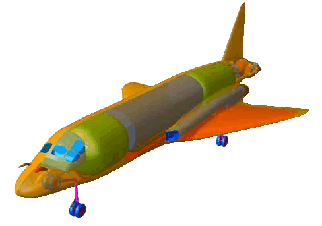
Dr. Raymer completed a two-phase conceptual design study for Pioneer Rocketplane (later Rocketplane Kistler). Raymer designed and analyzed a manned aircraft equipped with both air-breathing turbofans and a LOX/jet-fuel rocket motor. This uses the in-flight transfer of jet fuel and LOX to permit single stage to space operation. While at the top of a ballistic arc, the aircraft opens a payload bay door and ejects an upper stage which takes the payload the rest of the way to orbit.
Dr. Raymer did all of the vehicle design work, and brought together a CRC team of experience engineers to design and analyze the subsystems and propulsion installation. This team also did the air-breathing portion of the flight performance analysis, and worked with Rocketplane staff on the launch trajectory analysis.
Fuel Cell Electric Aircraft Design Study
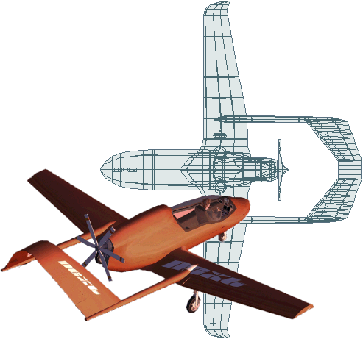
In a NASA-Glenn study performed for WILCO International Associates, Dr. Raymer developed an electric-powered hydrogen fuel cell aircraft concept which would use a pusher configuration to allow the heavy propulsion system to be located near the aircraft center of gravity. The tails are tailboom-mounted with an inverted V-tail arrangement. Design results indicated that range and performance would be competitive with gasoline-powered aircraft, provided that estimates of the propulsion system weight and power are attained.